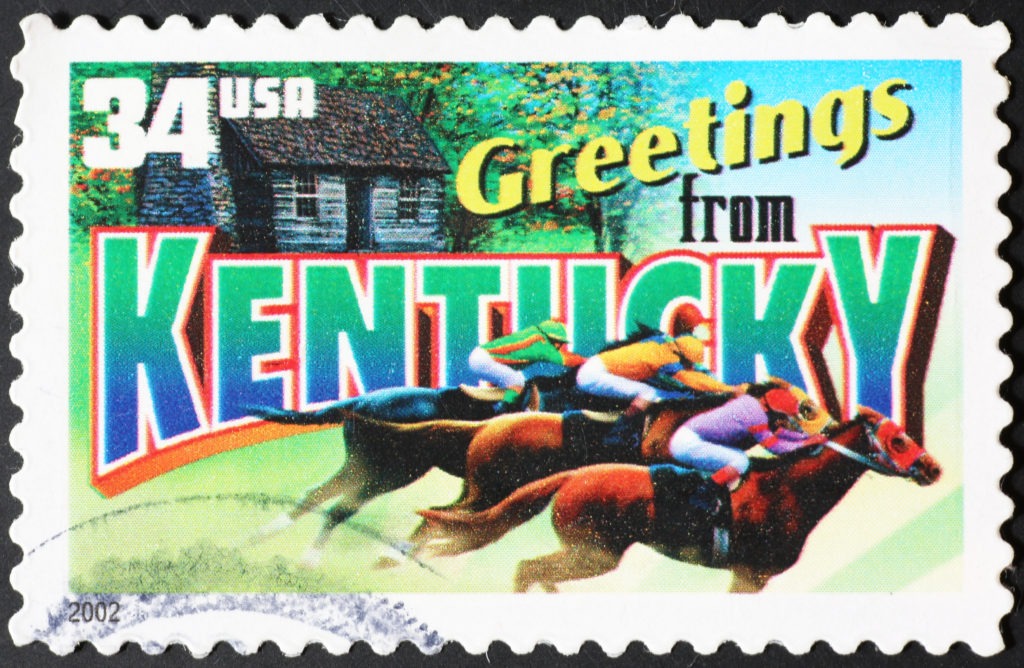
I’m going to ask you to put aside your politics for today’s blog post. I realize that’s a big ask these days.
But in this era of ROI and accountability, there’s a fascinating organic experiment occurring right now that could have impact on the radio broadcasting industry’s future as a viable tool for elections this year – and down the road.
For reasons I’ve had trouble fathoming over the past decade or so, radio has fallen out of favor among many political consultants. Regular readers of this blog will recall a Nielsen conference session I watched eight years ago, featuring political consultants from the left and the right.
Hosted by Edison’s Larry Rosin and Joe Lenski, both Mark Mellman and David Winston declared their aversion to using broadcast radio as a key media outlet in upcoming campaigns.
The reason? Among others, radio’s lack of accountability and R.O.I. – familiar rationales to divert marketing funds to brands like Google and Facebook – a trend that has caught on in markets big and small.
In the Q&A segment, Mellman explained to me that even though radio had been around politics since F.D.R., the medium had not demonstrated its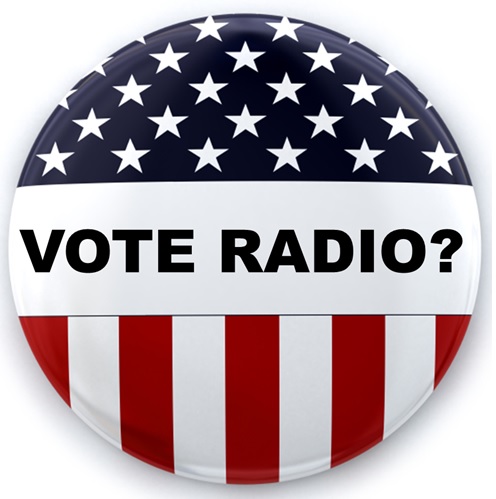 true return on investment, despite decades of ad spend on AM/FM stations.
true return on investment, despite decades of ad spend on AM/FM stations.
“You’ve got to show people, in a controlled experiment, what the impact was (of radio),” he explained.
That’s a tall order because virtually every political advertising campaign is a media mix. These days, an election marketing plan might include TV, digital, direct mail, telemarketing, outdoor, and yes, even radio. But it’s not possible to isolate one medium in order to determine its efficacy and impact on an election’s outcome.
Last fall, I blogged about the Biden campaign’s widespread use of radio in key battleground states throughout the country. In surgical fashion, Biden’s team directed more radio dollars to states like Michigan, Arizona, and Pennsylvania, outspending the Trump campaign by more than a 50-1 margin, according to McClatchy.
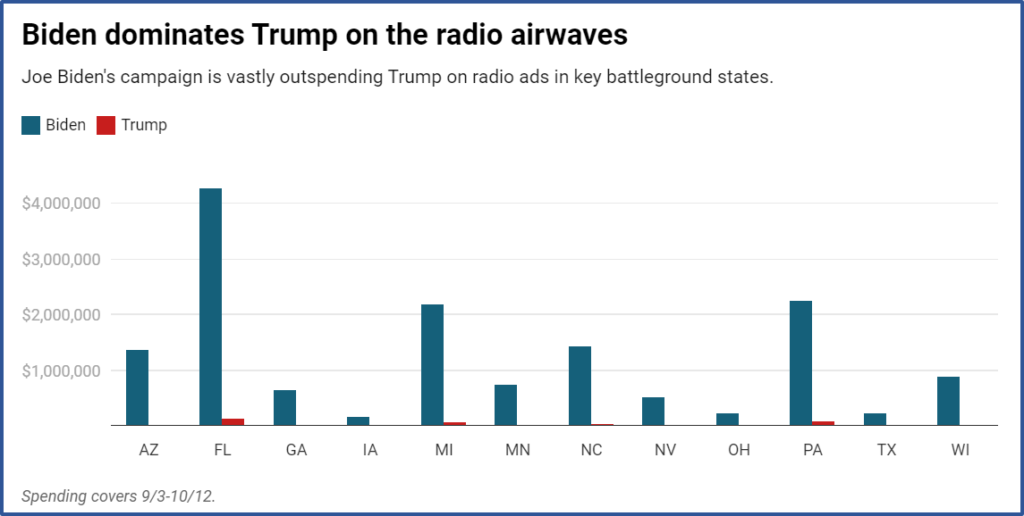
And yes, Biden won all three of these hotly contested states (all of which have been challenged by the Trump campaign). But again, radio was just one of many media tools utilized by Biden’s team.
Additionally, another state where Biden poured millions into radio ads – Florida – didn’t go so well. Trump definitively won the Sunshine State, yet another fact that calls the radio strategy into question. As any political strategist would point out, radio may have played an larger-than-usual role in Biden’s spending, but it was still one of many tools in his campaign arsenal.
So, that’s why news from earlier this week may be so important, because it could be that “controlled experiment” Mellman spoke about.
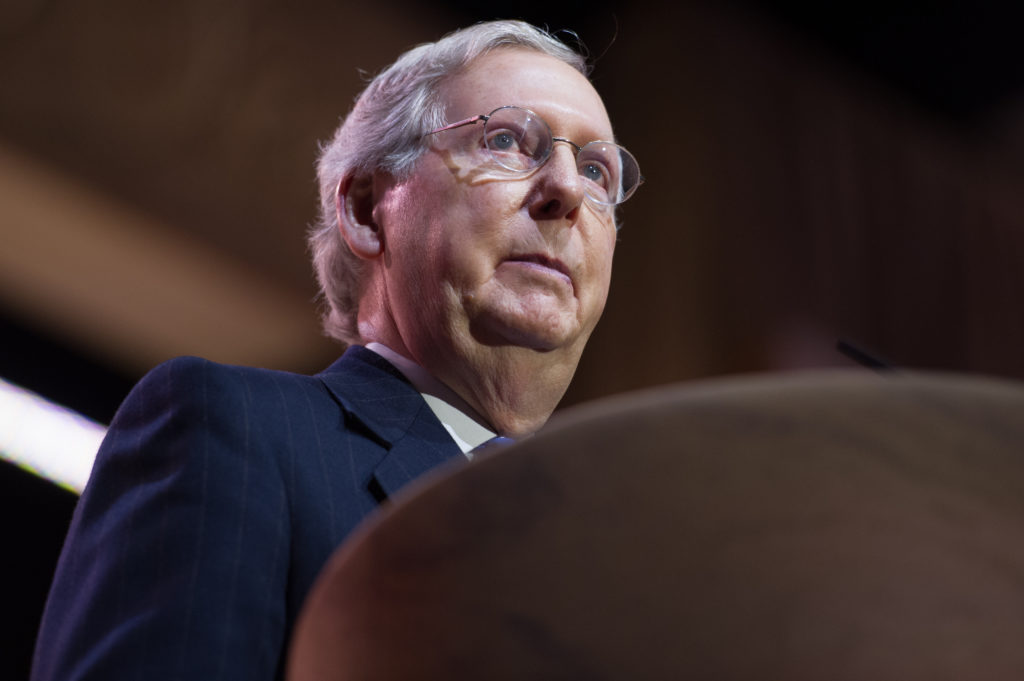 Senate Minority Leader Mitch McConnell has dipped into his election campaign fund (a rare move, to begin with) to launch a radio campaign urging his fellow Kentuckians to get the COVID vaccine.
Senate Minority Leader Mitch McConnell has dipped into his election campaign fund (a rare move, to begin with) to launch a radio campaign urging his fellow Kentuckians to get the COVID vaccine.
McConnell is using no other medium for this effort. Apparently, he feels he can reach more voters, more efficiently, and at the right level of ad spend to accomplish his goal of getting a much larger percentage of his constituents vaccinated.
How extensive is this campaign? McConnell’s radio buy is reported to cover 100 stations across the state, a campaign spend said to be in “the five figures.”
McConnell, a victim of polio as a child, voices these 60-second radio ads himself:
Here is the ad in full that will air across Kentucky…
“This is not complicated. 97% of people hospitalized for COVID are not vaccinated.
If you haven’t been vaccinated, do the right thing for you — for your family — and get vaccinated right now.” pic.twitter.com/JBv3aJTUSY
— Eva McKend (@evamckend) July 28, 2021
Why does this matter to radio’s advocates, from the RAB to sales managers in Glasgow, Kentucky?
There are metrics that will measure the effects of McConnell’s efforts.
According to Spectrum News, Kentuckians only have a 45% vax rate – well behind the national average. So, a simple “before and after” analysis could tell an important story about the campaign’s impact.
Sure, there are other variables at play here. McConnell is an important voice in a very red state. He has held a Senate seat for more than a quarter of a century. But on the other side of the coin, his constituents have been especially reticent to get the vaccine.
In 2020, his political enemies tried to tag him with “Moscow Mitch.” But after this campaign, he may be known as “Moderna Mitch.”
The handy scorecard below – courtesy of the CDC – can serve as a tracker for Mitch McConnell, for COVID vaccination efforts…and for broadcast radio. If vax rates show marked improvement during McConnell’s run of radio schedules – especially at a higher rate than other surrounding states –radio should get some credit. You can access the Kentucky data here.
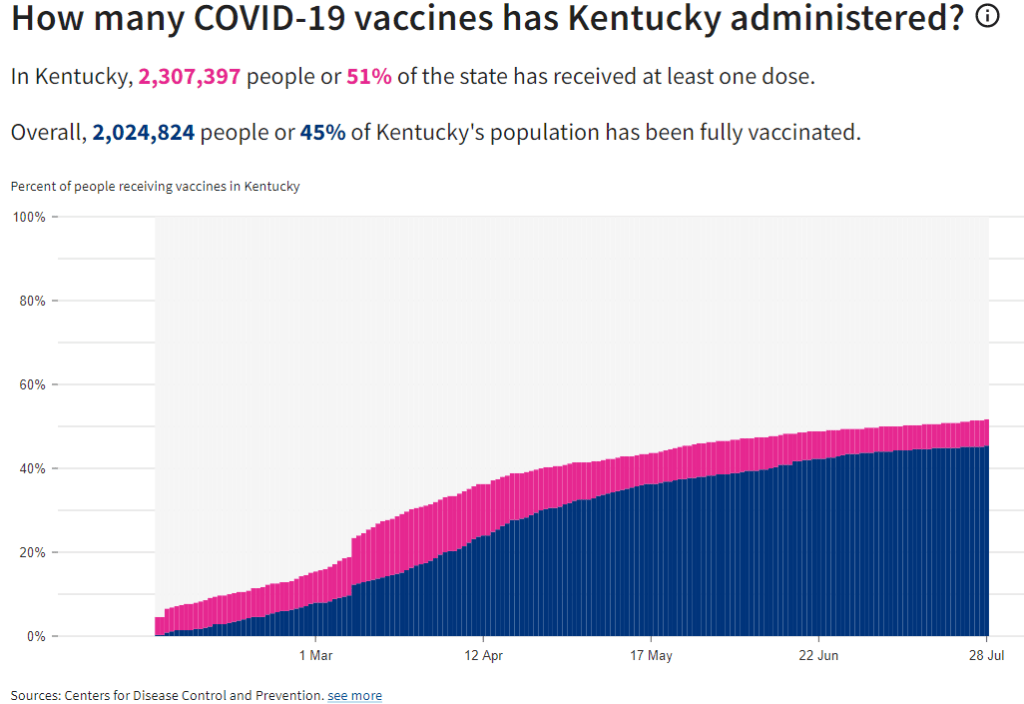
It also begs the question why state broadcasters wouldn’t get in on this effort as well. Pulling together radio stations from all over their states to create efficient vaccination campaigns – voiced by local politicians, celebrities, and sports stars – could be an effective way to help their regions return to “normal” more quickly, as well as support their members.
I know Mitch McConnell will be watching the results carefully.
I’ll bet Erica Farber will be, too.
You can access CDC data by state here.
- What To Do If Your Radio Station Goes Through A Midlife Crisis - April 25, 2025
- A 2020 Lesson?It Could All Be Gone In A Flash - April 24, 2025
- How AI Can Give Radio Personalities More…PERSONALITY - April 23, 2025




Hey Fred,
While I fully support the premise behind your blog post today the flaw in the thinking is that McConnell’s Kentucky radio campaign is not being conducted in a vacuum, perhaps the most accurate way to measure ROI. In fact, it’s received a significant amount of attention (for all the right reasons) from the national news media. And there should be no doubt that social media, for better or worse, is all over this story, too. Sadly, radio’s critics could still hang on to the silly notion that radio alone can’t move the needle in terms of results. Either way, let’s hope the outcome is what we all want: to avoid sliding back into mandates, lockdowns and restrictions that will reverse the course we’ve been on to create a new post-pandemic normal.
Thanks always for your insight and wisdom.
DG
Dennis, you’re right. There are always “outside variables,” you hit on a key one in this case. That’s why I’d love to see similar radio campaigns crop up in other states. Meantime, I second your idea that we return to “normal” – or at least where we thought we were in June. Thanks for the comment.
If Addison McTurtle (my nickname for the Senate Minority Leader) really believes in radio, then let him remember this when anything that can improve things for us — I’m thinking that Performance Act bill — comes to his side of Capitol Hill. And let him be thus motivated to do the right thing by us.
Thanks, KM.
What I’d really like to see is a geographic breakdown of where the ads are running; in a state like Kentucky, you can’t rely on just a few markets.
A lot of the significantly populated areas straddle a state border; this includes not just such Nielsen-rated metros as Louisville, Cincinnati, Huntington/Ashland, and Evansville, but also such other areas as Paducah/Metropolis (which was recently measured by Eastlan) and Clarksville/Hopkinsville (which, I think, was rated by Nielsen a little while back, but hasn’t been recently). (Only two currently Nielsen-rated metros–Lexington and Bowling Green–are completely within the state. Meanwhile, Eastlan also has recently had Owensboro [somewhat in the shadow of Evansville, and also along the Ohio River] and Murray/Mayfield/Benton [roughly between Paducah and the Tennessee border].) Beyond that, some other areas of the state–especially in the far-southeast–are potentially better-served by some of the strongest stations in a somewhat-distant metro (like Knoxville’s WCYQ). And then, you have all of the rural areas that are between those markets.
Or, to put it another way: It’s possible that 100 stations might not be enough here.
There’s been nothing released by any news source or online article addressing the specific of McConnell’s media campaign that I’m aware of.
His ads are running on the Kentucky News Network. Which pretty much covers the entire state.
Carter, thanks for these comments. Regarding vaccine hesitanccy, you may be right.
McConnell can run all the radio ads he wants. It will still not change the reluctance of folks to get this vaccine. Everyone who wants it, has gotten it. All the bribery, coercion, threats and intimidation will not change that. In fact, will make the reluctance to take an experimental drug that much more.
The big question should be, “how good is the message?”
Has it been tested?
You can be on the biggest, badest media you want, however,
if your message “sucks like a hover”, it doesn’t matter!
Chuck, no argument from me about the need for good creative. Although like so many political ads, there’s nothing very special about McConnell’s spot – except he’s the guy reading it, and perhaps his message is a bit unexpected. Thanks for commenting.